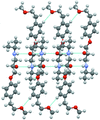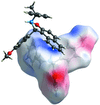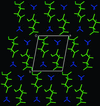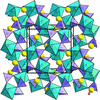issue contents
February 2019 issue

Cover illustration: This article describes the syntheses, crystal structures and theoretical calculations of six group IIB coordination compounds containing a 2-{[(2-methoxyphenyl)imino]methyl}phenol ligand to provide further insight into the role of ![[pi]](/logos/entities/pi_rmgif.gif) -stacking and hydrogen bonding in metallosupramolecular assembly. See Hajiashrafi, Roghayeh, Flanagan, Farnoush, Bauzá, Frontera & Senge [Acta Cryst. (2018), C74, 178-188].
-stacking and hydrogen bonding in metallosupramolecular assembly. See Hajiashrafi, Roghayeh, Flanagan, Farnoush, Bauzá, Frontera & Senge [Acta Cryst. (2018), C74, 178-188].
research papers


 access
access



















 access
access













 journal menu
journal menu


































